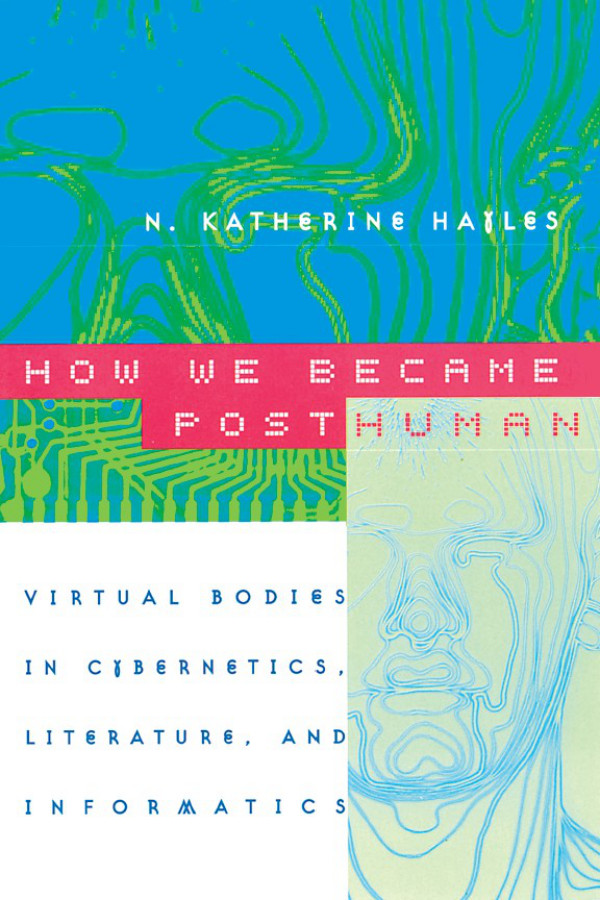Norbert Wiener: Cybernetics, or the Control and Communication in the Animal and the Machine (1948–) [EN, RU, IT]
Filed under book | Tags: · animal, computing, cybernetics, machine, mathematics

“Acclaimed as one of the ‘seminal books … comparable in ultimate importance to … Galileo or Malthus or Rousseau or Mill’, Cybernetics was judged by twenty-seven historians, economists, educators, and philosophers to be one of those books published during the ‘past four decades,’ which may have a substantial impact on public thought and action in the years ahead.”—Saturday Review
First published by Hermann & Cie, Paris, 1948.
Second edition
Publisher MIT Press, 1961
Fourth printing, 1985
ISBN 026273009X, 9780262730099
212 pages
Cybernetics, or the Control and Communication in the Animal and the Machine (English, 2nd ed., 1948/1961, PDF, DJVU, updated on 2015-12-6)
Kibernetika, ili upravlenie i svyaz v zhivotnom i mashine (Russian, trans. G.N. Povarov, 1958, DJVU, added on 2021-4-8)
La cibernetica: controllo e comunicazione nell’animale e nella macchina (Italian, trans. Giampaolo Barosso, 1968/1982, added on 2021-4-8)
See also Monoskop resource on Cybernetics.
Comment (0)N. Katherine Hayles: How We Became Posthuman: Virtual Bodies in Cybernetics, Literature, and Informatics (1999)
Filed under book | Tags: · android, artificial intelligence, autopoiesis, body, cellular automata, computing, cybernetics, cyborg, epistemology, literature, posthuman, posthumanism, technology, virtual reality

“In this age of DNA computers and artificial intelligence, information is becoming disembodied even as the “bodies” that once carried it vanish into virtuality. While some marvel at these changes, envisioning consciousness downloaded into a computer or humans “beamed” Star Trek-style, others view them with horror, seeing monsters brooding in the machines. In How We Became Posthuman, N. Katherine Hayles separates hype from fact, investigating the fate of embodiment in an information age.
Hayles relates three interwoven stories: how information lost its body, that is, how it came to be conceptualized as an entity separate from the material forms that carry it; the cultural and technological construction of the cyborg; and the dismantling of the liberal humanist “subject” in cybernetic discourse, along with the emergence of the “posthuman.”
Ranging widely across the history of technology, cultural studies, and literary criticism, Hayles shows what had to be erased, forgotten, and elided to conceive of information as a disembodied entity. Thus she moves from the post-World War II Macy Conferences on cybernetics to the 1952 novel Limbo by cybernetics aficionado Bernard Wolfe; from the concept of self-making to Philip K. Dick’s literary explorations of hallucination and reality; and from artificial life to postmodern novels exploring the implications of seeing humans as cybernetic systems.
Although becoming posthuman can be nightmarish, Hayles shows how it can also be liberating. From the birth of cybernetics to artificial life, How We Became Posthuman provides an indispensable account of how we arrived in our virtual age, and of where we might go from here.”
Publisher University of Chicago Press, 1999
ISBN 0226321460, 9780226321462
350 pages
PDF (updated on 2012-7-24)
Comment (0)Sumit Ghosh, Elliot Turrini (eds.): Cybercrimes: A Multidisciplinary Analysis (2010)
Filed under book | Tags: · computing, cybercrime, encryption, internet, networks, security, virus

Designed to serve as a reference work for practitioners, academics and scholars worldwide, this book is the first of its kind to explain complex cybercrimes from the perspectives of multiple disciplines (computer science, law, economics, psychology, etc.) and scientifically analyze their impact on individuals, society, and nations holistically and comprehensively. In particular, the book shows – How multiple disciplines concurrently bring out the complex, subtle, and elusive nature of cybercrimes; – How cybercrimes will affect every human endeavor, at the level of individuals, societies, and nations; – How to legislate proactive cyberlaws, building on a fundamental grasp of computers and networking, and stop reacting to every new cyberattack; – How conventional laws and traditional thinking fall short in protecting us from cybercrimes; – How we may be able to transform the destructive potential of cybercrimes into amazing innovations in cyberspace that can lead to explosive technological growth and prosperity.
Publisher Springer, 2010
ISBN 3642135463, 9783642135460
414 pages

